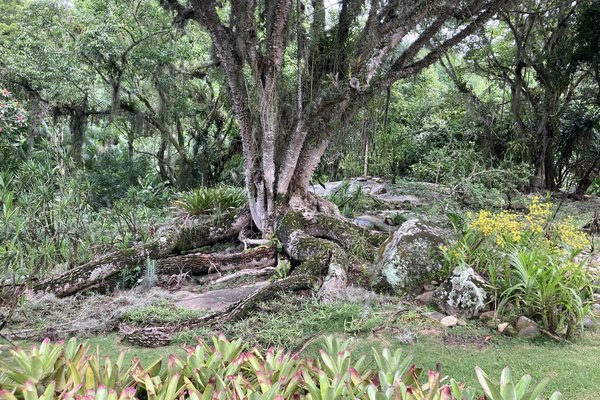Brazil
Sítio Roberto Burle Marx
The Sítio Roberto Burle Marx is a landscaped estate that is an important example of Modernist Tropical garden design.
The most important works of the artist Robert Burle Marx are stored here. He was aligned with the Brazilian Modern Movement and is mostly known for his design of modern tropical gardens. He lived at this site from 1949 on and did his botany and garden landscaping experiments here, focusing on the use of native tropical plants and trees.
Community Perspective: easy to reach by metro/bus/Uber combi as it lies in the (far!) outskirts of Rio de Janeiro. The obligatory guided tour can give you the creeps (read Zoë’s review), as the “emotional tribute to the artist” is not for all.
Site Info
Official Information
- Full Name
- Sítio Roberto Burle Marx (ID: 1620)
- Country
- Brazil
- Status
-
Inscribed 2021
Site history
History of Sítio Roberto Burle Marx
- 2021: Inscribed
- Inscribed
- Type
- Cultural
- Criteria
- ii
- iv
Links
- UNESCO
- whc.unesco.org
- Official
-
- sitioburlemarx.org — Sitio Roberto Burle Marx
All Links
UNESCO.org
- whc.unesco.org — whc.unesco.org/
Official Website
- sitioburlemarx.org — Sitio Roberto Burle Marx
Community Information
- Community Category
- Secular structure: Park or garden
- Cultural Landscape: Clearly defined
Travel Information
Reservation required
…
Guided Tour Only
Rio de Janeiro Hotspot
Recent Connections
-
Perfect Inscriptions
2021 -
Guided Tour Only
Only via one of the scheduled group vis… -
Reservation required
Has to be done online weeks beforehand,…
Connections of Sítio Roberto Burle Marx
- Geography
-
-
Atlantic Forest
"The portion of the nominated property above 100 metres in elevation is part of the Pedra Branca State Park, a dense ombrophilous forest that is part of the Atlantic Forest." (AB ev)
-
- History
-
-
Fusion
crit iv: "a new type of landscape design that fused creative ideas of the Modern art movement with local typologies and tropical plants"
-
- Architecture
-
-
Glazed tiles
Made by Marx himself, a panel covering the walls of one of the buildings on site -
International style
"ICOMOS considers the property demonstrates an important interchange of ideas on landscape design related to the importation of ideas of the Modernist art movement from Europe" (AB ev) -
Reinforced Concrete
"the concrete roof slab of the Stone Kitchen" (AB ev)
-
- World Heritage Process
-
-
Perfect Inscriptions
2021
-
- Constructions
-
-
Loggia
"In the external area of the house, there is the “Loggia”, a place used for serigraphy and painting of large fabric panels."
-
- Timeline
-
-
Built in the 20th century
The 1949 purchase was the first of three acquisitions of land that now forms the nominated property (AB ev)
-
- WHS Hotspots
-
-
Rio de Janeiro Hotspot
Residence and gardens on outskirts of Rio, accessible via subway and public bus (~2-2.5 hours each way)
-
- Science and Technology
-
-
Botanical Gardens
By the end of the 1960s, the nominated property housed the most representative collection of Brazilian plants, as well as rare species from the tropics in general. The collection of living plants became one of the most important in the world (AB ev)
-
- Visiting conditions
-
-
Reservation required
Has to be done online weeks beforehand, especially for tours in the English language. -
Guided Tour Only
Only via one of the scheduled group visits of 1.5h.
-
- WHS Names
-
-
Named after individual people
Roberto Burle Marx, a Brazilian landscape architect
-
News
No news.
Recent Visitors
Visitors of Sítio Roberto Burle Marx
- Alberto Rodriguez Gutierrez
- Alejandro Lau
- Alvaro1404
- Aspasia
- Bill Maurmann
- Carlo Sarion
- Carlos Sotelo
- Christoph
- Christravelblog
- Dorejd
- Doubanjiang
- Els Slots
- Fan Yibo
- Felicité
- Frédéric M
- hotpickle
- IreneKD
- Jarek Pokrzywnicki
- Joel on the Road
- kiank37
- Kurt Lauer
- Little Lauren Travels
- Luis Filipe Gaspar
- Maciej Gil
- Palimpsesto
- Patrik
- Pieter Dijkshoorn
- Roman Bruehwiler
- Shandos Cleaver
- Thomas Buechler
- Thomas van der Walt
- Walter
- Xiquinho Silva
- zfish
- Zoë Sheng
Community Reviews
Show full reviews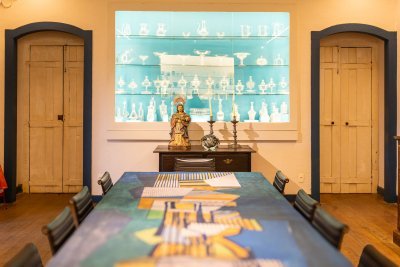
We visited Sitio Roberto Burle Marx in Sep 2022, when Rio was experiencing several days of torrential rain. I had to cancel our first two attempts to visit due to the weather, but the rain hadn't stopped even on the day we finally went. Although this review is two years overdue, I thought I'd document my experience visiting the site and share some thoughts about Burle Marx, whom people have both criticised and revered.
Getting started
We took an Uber from our accommodation in Ipanema to the site, and the trip took a bit longer than the usual hour-long journey. As previous reviews have emphasised, it’s essential to book ahead since the guided tours have limited capacity. We checked in at the gate and waited at the administration building. I took a copy of the visitor's guide, which proved helpful when trying to remember our tour.
The tour started on time and lasted for about 1.5 hours. The guide gave us the usual introduction to the site and the life of Roberto Burle Marx. As expected, the guide praised Burle Marx’s contributions to modernist landscape design and pointed out that the dude is more than just landscape architect–he was also a painter, printmaker, and jewellery designer. The guide also told us that the visitable area is just a small portion of the property, which includes forested areas at the foothills of Barra de Guaratiba. Walking through the gardens it was clear that Burle Marx had planted various …
Keep reading 0 comments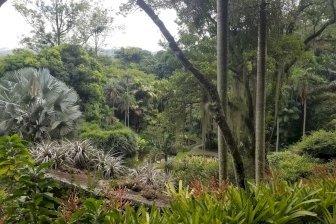
Seeing that it's just outside of Rio it's hard NOT to recommended going to see but frankly I am disappointed in the site not purely because it's rather mediocre but as a WHS there is no way it qualifies as one. It is instead an excuse to be inscribed as a homage to Burle Marx, who in my opinion broke several (not back in the days when he did it?) importing biological materials laws/guidelines and planted it all in his estate. Speaking of estate, he's a rich fellow and the huge divide between classes in Brazil makes this another questionable point: why we want to honor a person who imported luxurious art and plants to his estate while the rest of the country is struggling. I don't find him honorable and the estate itself is a poor example of his work.
Let's start from the top. First they have recently (start of 2022) begun a new online appointment system. Slots are limited with only a few guided tours per day and most of them are in Portuguese. The staff was super friendly when I got in touch with them while it was still closed for Covid-19 quarantine and announced when it was ready with their new appointment system. The English of the one particular staff (forgot his name, sorry) was particular good in both written and later in spoken during the tour.
You can stay in several lodges around the area but I would say the prices are …
Keep reading 0 comments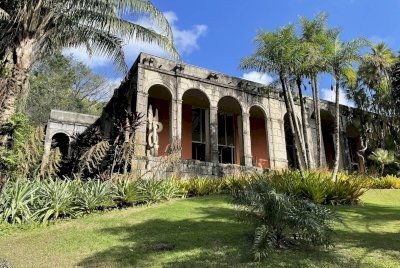
As you travel through Brazil's World Heritage sites, the name Roberto Burle Marx keeps on popping up. Almost as much as Oscar Niemeyer! A world-renowned garden designer, landscape architect, botanist, conservationist, painter, and tapestry weaver, Burle Marx's work features in several other Brazilian WH sites including Brasilia, Pampulha, and Rio. So in a way, it was quite fortunate for us that visiting his estate home, studio, acreage, and artistic legacy on the outskirts of Rio came near the end of our Brazil trip, rather than at the start.
Exploring the house, gardens, and studio on a guided tour gives you a fantastic insight into the man himself, his artistic development, and his passion for the incredible plants and landscapes of his beautiful homeland that so heavily inspired his works. Personally, I really enjoyed that the house and gardens have been preserved essentially as they were when Burle Marx died, so you can really see the final evolution of his ideas. And his tapestries and paintings on the walls are excellent too, showing the development from realism into Picasso-esque abstract designs.
Tickets - very important!
Visits to the property are only available via guided tours during 09:30-13:30 Tuesday through Saturday, and must be booked in advance. Reservations are done via their website: https://sitio-roberto-burle-marx.reservio.com/. They release an entire month of tickets at once, in the last week of the previous month (so for this September, tickets will be released 23rd August). Tickets get snapped up fairly quickly, so …
Keep reading 0 comments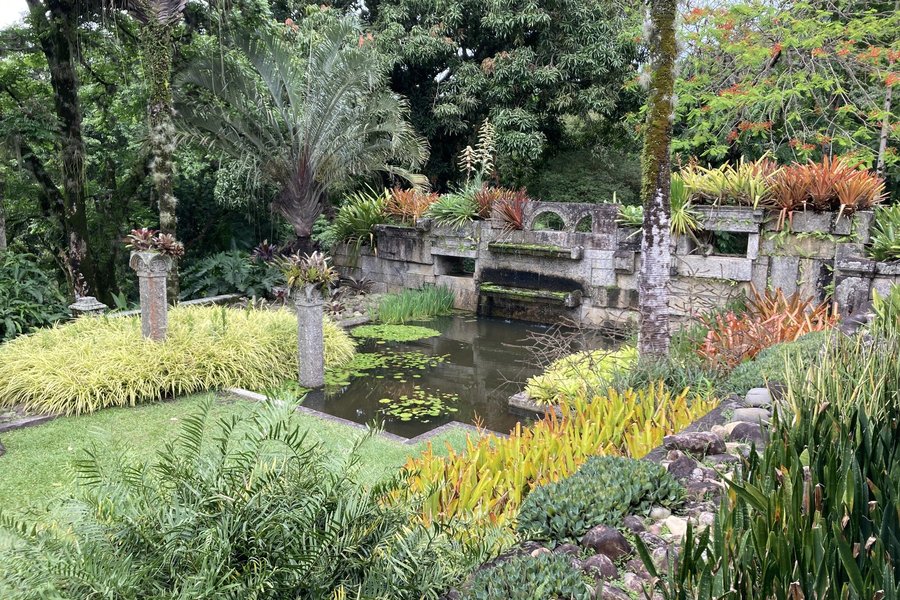
Isn't it lovely when you visit a tentative site, and it ends up inscribed years later? I visited Sitio Roberto Burle Marx back in 2017 while I was in Rio for work. It is well worth a half-day trip from the city and a good example of why WHS-based travel can be so rewarding -- it's a place I'd have never discovered had I not been looking at the lists (well, tentative lists at the time).
Burle Marx was a Brazilian landscape architect. The site consists of his house and gardens. The site reminds me somewhat of the Luis Barragan House in Mexico City, and is a nice addition to the Niemeyer architectural tour that you can do in Brazilia and Belo Horizonte. Burle Marx was a contemporary of Niemeyer and designed the gardens at Pamphula
Date of Visit: August 2017
Rating: 3 stars. I am a sucker for modern architecture, and I also find it nice to have a self-contained, single visit site to capture the key value of an architect/gardener’s works (as opposed to trekking around the world to visit Corbusier’s assorted works or across the U.S. for Frank Lloyd Wright’s buildings.) I thoroughly enjoyed the visit and think it complements the Niemeyer sites listed in Brazil, as the two were contemporaries who sometimes worked together.
Logistics: Visits are only by guided tours. I emailed the site to schedule a visit in advance, and was scheduled for an English language tour on the requested …
Keep reading 0 comments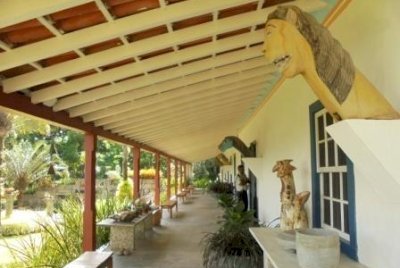
Site visited in March 2020. As Walter described all the aspects of the site I would focus more on practical issues.
It is a nice place, fully deserved to be on the list. Currently working hours of the place are quite difficult for visitors. It is not open on holidays nor on Sundays (Mondays either but that is more understandable). All individual visits have to be arranged in advance and there is only one English-speaking guide on the place. You can arrange the visit through their website:
Site: http://portal.iphan.gov.br/srbm
Facebook: https://www.facebook.com/SitioBurleMarx.Iphan/
e-mail: visitas.srbm@iphan.gov.br
Official leaflet says that the visits can take place only twice a day - at 9.30 and at 13.30 - tours up to 35 people but during my visit there were other groups that started a bit later than 9.30. Visit costs 10 R$, paid by cash only. Have in mind that Sitio is similar to any other botanical garden with its ponds and water so there are plenty of mosqitos (and other flying and biting creatures) there - be prepared with appropriate repelent.
It is possible to reach the place by public transport. The best way to get to the Sítio from central Riois to take the subway line until "Jardim Oceanico" station, and them take the "Rapid Transit Bus" (BRT in portuguese) until "Ilha de Guaratiba" station. After that, in Ilha de Guaratiba Station you can take another bus that leave you at the gates of the Sítio.
…
Keep reading 0 comments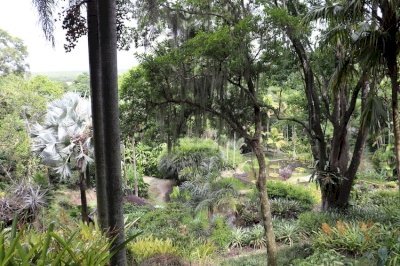
About 40 km west of Rio de Janeiro center, this site is a botanical park and museum dedicated to Roberto Burle Marx, a famous Brazilian landscape architect and avid collectors of plants and trees. Along with Oscar Niemeyer, Burle Marx achieved several modernist projects in Brazil, some already inscribed on the World Heritage Site: Pampulha Modern Ensemble in Belo Horizonte, Brasilia, Rio de Janeiro (specifically for Copacabana pavements and Flamingo Park) along with the Palais de la Culture in Rio, which is on the TL.It is planned for inscription for 2020.In 1949 Burle Marx and his brother bought this banana plantation and slowly transformed the property into an extraordinary botanical landscape with an impressive collection of tropical and subtropical plants. He built a small house with contemporary features, and lived there from 1973 to his death in 1994. Several other buildings dot the park: a 17th century renovated chapel, a visitor’s center designed by Burle Marx when he donated the park to the Brazilian state, and a “atelier” in which he planned to teach, but never had a chance to. Nowadays lectures and concerts are held in this last building.His house now displays an emotional tribute to the artist, with personal objects (his bed, with his glasses and shoes, his piano), his work (statues, paintings, drawings, tapestries, textiles, murals) and his collections (pre-Colombian ceramics, catholic religious artifacts, shells and fossils).The most interesting part if of course the garden, with more than 3000 species of cultivated plants. It takes about …
Keep reading 0 comments
